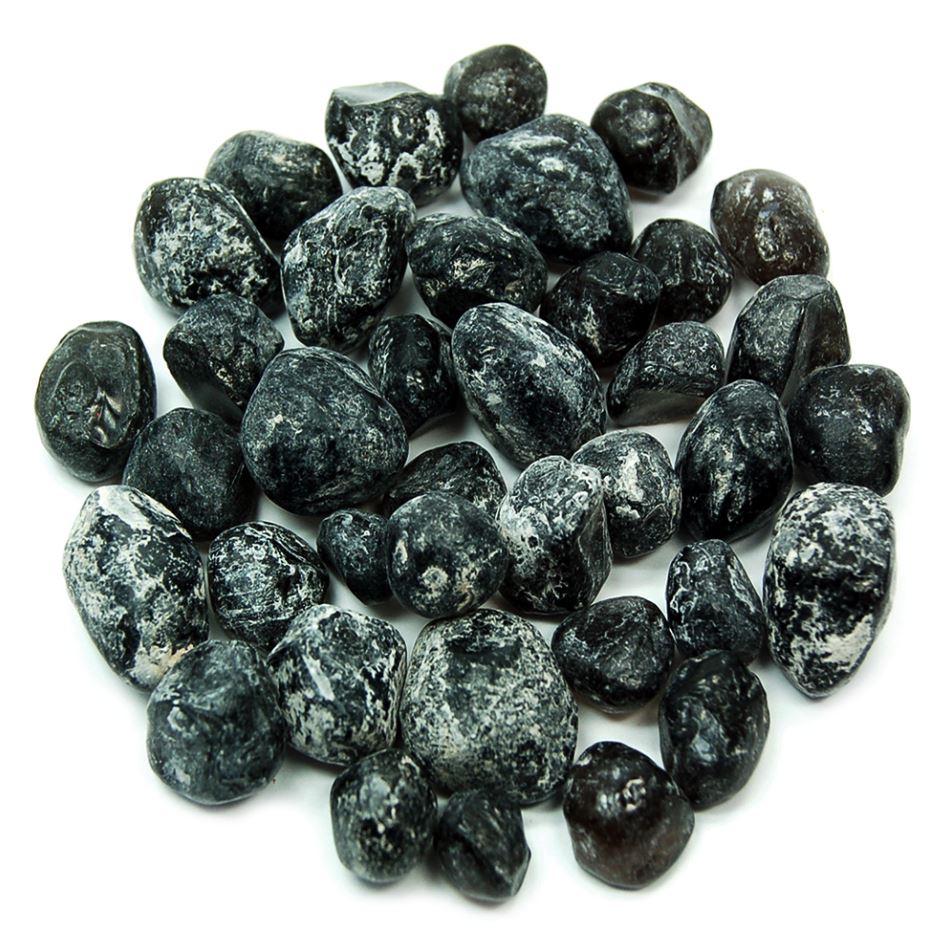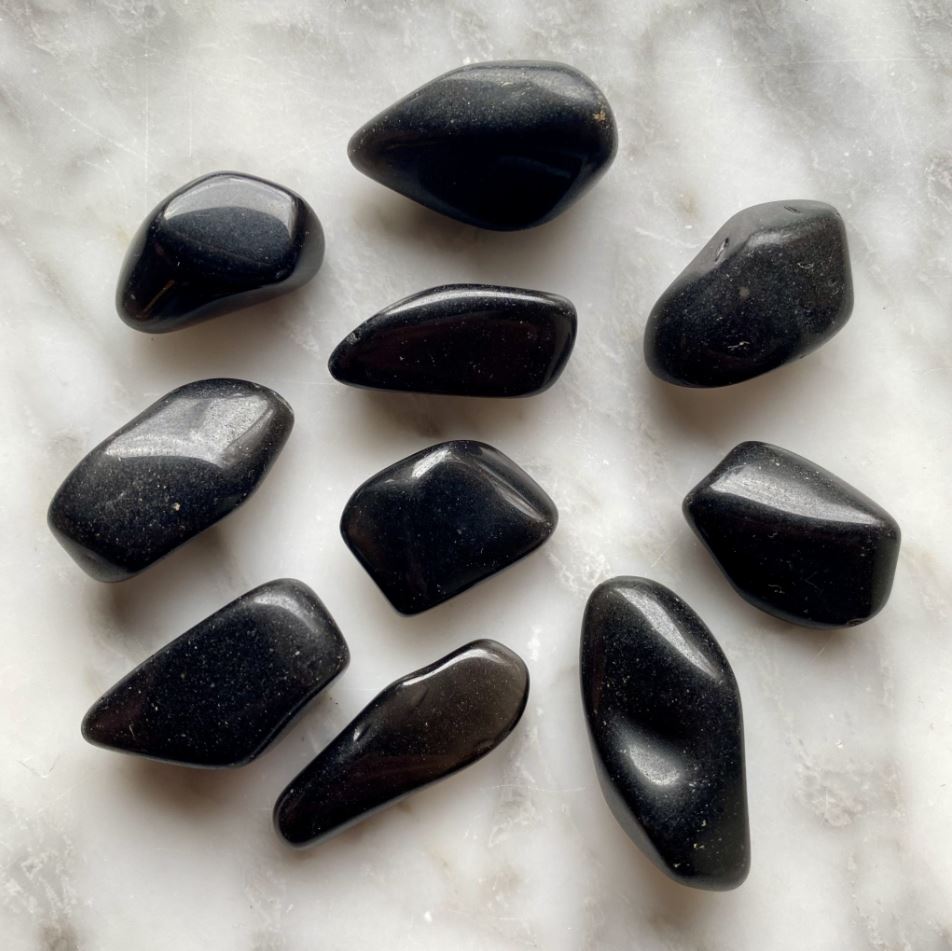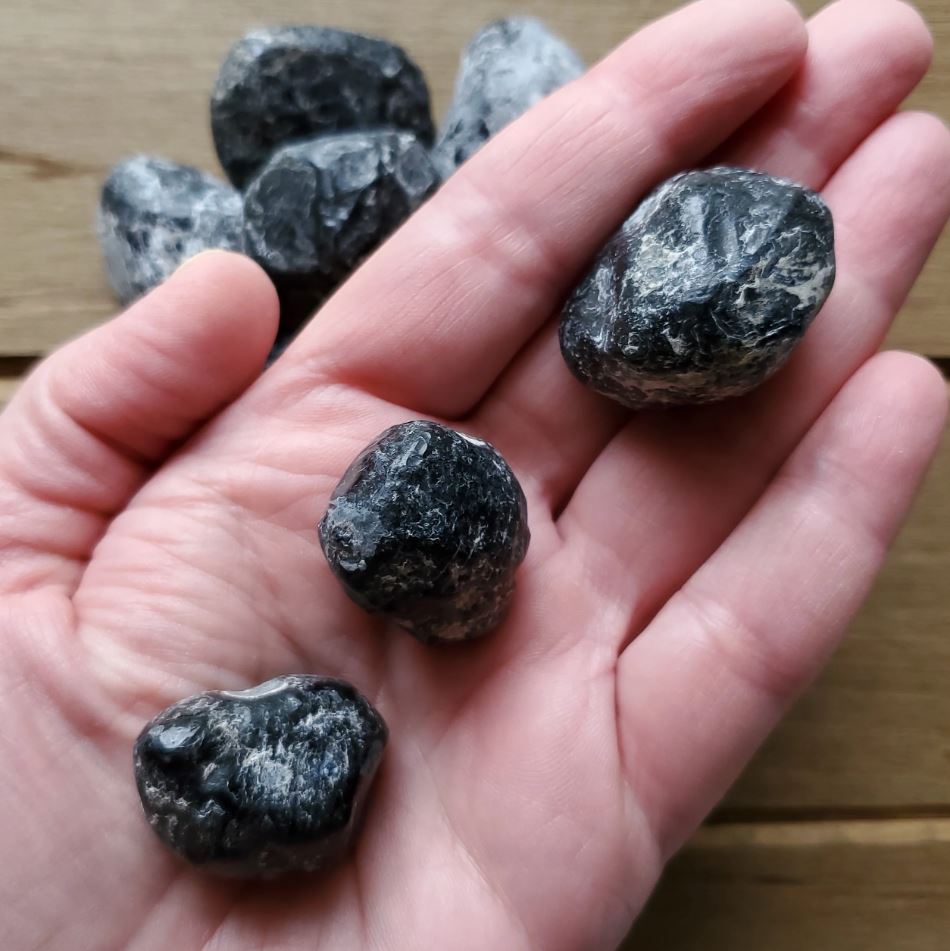The Fascinating World of Apache Tears A Geological
Apache Tears stand out as a captivating and distinctive variety of obsidian, a natural volcanic glass formed from the rapid cooling of silica-rich lava. Unlike the typical sharp and jagged edges of standard obsidian, Apache Tears are smoother and more rounded, resembling dark, polished pebbles. These stones generally measure up to about two inches in diameter and are characterized by their dark, often black color, which can appear opaque in reflected light. However, one of their most remarkable features is their translucency—when held up to the light, Apache Tears reveal a translucent to semi-transparent quality, allowing light to pass through them in intriguing patterns.
This unique translucency, combined with their smooth, curved surfaces that often bear a conchoidal fracture pattern, makes Apache Tears not only a geological curiosity but also a favorite among collectors and enthusiasts. The surfaces of these pebbles are typically indented, giving them a tactile appeal that differs significantly from the flat or angular surfaces of traditional obsidian artifacts. Internally, these stones might display fine bands or contain microlites—tiny, needle-like inclusions—that add to their aesthetic and scientific interest.
The distinct physical characteristics of Apache Tears, such as their rounded shape and the presence of conchoidal fractures, contribute to their unique place within the broader category of obsidian. These features hint at their volcanic origin and the particular conditions under which they were formed, offering a glimpse into the dynamic geological processes that shape our Earth’s surface. Their intriguing appearance and physical properties not only make them a subject of study but also lend them a mystical quality that has been woven into the folklore of the cultures that encounter them.
| Feature | Description |
|---|---|
| Type | Distinctive variety of obsidian |
| Formation | Formed from the rapid cooling of silica-rich lava |
| Appearance | Smoother, more rounded than typical obsidian, resembling dark polished pebbles |
| Size | Generally up to two inches in diameter |
| Color | Dark, often black, opaque in reflected light |
| Translucency | Translucent to semi-transparent when held up to light |
| Surface Features | Smooth, curved surfaces with conchoidal fractures; may have indents |
| Internal Features | May display fine bands or contain microlites (needle-like inclusions) |
| Geological Significance | Indicates volcanic origin and specific formation conditions |
| Cultural and Mystical Value | Subject of study and folklore, lending a mystical quality |
Contents
Characteristics and Composition of Apache Tears
Apache Tears are a fascinating form of obsidian, known scientifically as obsidianites, and colloquially derived from their more common geological term, marekanite. These pebbles are distinct for their rounded to subangular shapes and smooth surfaces, often displaying a deep black or dark brown color. Typically, they range in size up to about 2 inches (51 mm) in diameter, making them noticeably smaller and more delicate compared to traditional obsidian fragments.
These volcanic glass pebbles are primarily made up of rhyolitic composition, which is a silica-rich volcanic rock. One of the most striking physical properties of Apache Tears is their conchoidal fractures—a type of breakage that creates a curved surface and is commonly associated with glass and flint. This feature is indicative of their brittle nature and high silica content, which also allows for the pebble’s glossy finish.

Internally, Apache Tears can showcase fascinating features such as fine bands or layers and the presence of microlites, which are tiny crystalline formations within the glass matrix. These internal characteristics are often only visible when the stone is sliced or viewed under strong light. Additionally, despite appearing opaque in normal lighting conditions, Apache Tears can reveal a surprising level of translucency when backlit, highlighting their complex internal textures.
On the Mohs hardness scale, which measures the scratch resistance of various minerals, Apache Tears typically fall between 5 and 5.5. This makes them relatively soft compared to many other minerals, but still hard enough to be used in jewelry and other decorative objects.
| Feature | Description |
|---|---|
| Scientific Name | Obsidianites, also known as marekanite |
| Shape and Surface | Rounded to subangular, smooth surfaces |
| Color | Deep black or dark brown |
| Size | Up to 2 inches (51 mm) in diameter |
| Composition | Rhyolitic (silica-rich volcanic rock) |
| Fracture Type | Conchoidal fractures indicative of a brittle nature |
| Finish | Glossy due to high silica content |
| Internal Features | Fine bands or layers, presence of microlites (tiny crystalline formations) |
| Translucency | Opaque in normal light, translucent when backlit |
| Mohs Hardness | Typically 5 to 5.5 |
| Uses | Used in jewelry and decorative objects |
Geology and Formation
During the cooling process, differential cooling rates play a crucial role. This means that different parts of the lava cool at different speeds, leading to tension within the rock that can eventually form rounded structures like Apache Tears. The presence of alkali and varying water content in the magma also affects the cooling process, with higher water content typically leading to more extensive fracturing and hydration.

This hydration process is critical for the formation of Apache Tears. When the obsidian from volcanic eruptions cools and hydrates, it often transforms into perlite—a pale, porous volcanic glass. In some cases, not all of the obsidian converts into perlite; the cores that remain unhydrated retain their glassy nature and form what are known as Apache Tears. These are often found embedded within masses of perlite, showcasing a texture of concentrically curved, onion-skin fractures around the obsidian core.
Geographically, Apache Tears are notably found in the volcanic terrains of the western United States, particularly in areas like Arizona, which is known for its rich deposits. These regions are characterized by their extensive tertiary volcanic activity, which creates the ideal conditions for Apache Tears to form. Locations within Nevada and other parts of the American West also boast significant occurrences of these stones, making them a common find in these volcanic-rich regions.
The unique combination of geological conditions required for the formation of Apache Tears, along with their intriguing physical and compositional characteristics, make them a subject of interest not only for geologists but also for collectors and enthusiasts worldwide. Their presence in the landscapes of the American West adds a layer of mystique and allure to the region’s natural history.
| Aspect | Details |
|---|---|
| Geological Structures | Siliceous lava flows, lava domes, ash-flow tuffs, primarily composed of high-silica magma |
| Origin Process | Hydration and cooling within volcanic settings |
| Cooling Rates | Differential cooling rates lead to tension and formation of rounded structures like Apache Tears |
| Magma Content | Influenced by alkali levels and water content; higher water content leads to more fracturing and hydration |
| Hydration Process | Transforms obsidian into perlite; cores that remain unhydrated form Apache Tears |
| Appearance in Perlite | Embedded within perlite, displaying concentrically curved, onion-skin fractures around the obsidian core |
| Geographic Occurrence | Primarily in the volcanic terrains of the western United States, especially Arizona, Nevada, and other parts of the American West |
| Cultural and Scientific Interest | Subject of interest for geologists, collectors, and enthusiasts; adds mystique to the American West’s natural history |
Cultural Significance Via Video
The name “Apache Tear” is deeply rooted in the folklore of the American Southwest, specifically tied to a tragic event involving the Apache tribe in Arizona during the 1870s. According to legend, a small band of Apache warriors was cornered by the U.S. Cavalry on a mountain near what is now Superior, Arizona. Rather than surrender, these warriors chose to ride their horses off the cliff to their deaths. The story tells that the tears shed by the grieving families of these warriors turned into the stones now known as Apache Tears upon hitting the ground. This poignant tale imbues these natural objects with a profound emotional and cultural significance, transforming them from mere geological specimens into symbols of sorrow and resilience.
The legend of the Apache Tears is a powerful narrative that illustrates the deep connection between Indigenous peoples and the landscapes they inhabit. For many, these stones are not just beautiful natural objects but are also imbued with the spirits and memories of those who have passed. This connection has elevated Apache Tears beyond their geological properties, making them a symbol of the cultural heritage and historical struggles of the Apache people.
| Aspect | Details |
|---|---|
| Folklore Origin | Linked to an 1870s tragedy involving the Apache tribe in Arizona where warriors chose death over surrender, leading to the creation of Apache Tears from the tears of their grieving families. |
| Cultural Significance | Symbols of sorrow and resilience, representing the emotional and cultural impact of the Apache people’s history and struggles. |
| Spiritual Meaning | Believed to be imbued with the spirits and memories of the Apache warriors, symbolizing deep connections to the land and its history. |
| Uses | Apache Tears are valued not just as geological specimens but as integral parts of cultural heritage, used in various spiritual practices and as objects of remembrance and healing. |
Apache Tears in Modern Times
In contemporary times, Apache Tears have gained considerable recognition in the lapidary and specimen trade. Their unique appearance and the legends surrounding them have made them popular among collectors and enthusiasts. These stones are often polished and used in jewelry, where their glossy black surface and intriguing translucency can be fully appreciated. Additionally, their relative abundance and durability make them suitable for amateur collectors and rockhounds, adding to their appeal.
Apache Tears are classified as semi-precious stones due to their unique properties and the aesthetic value they hold. Their status as semi-precious stones is not just a reflection of their physical qualities but also their cultural and historical significance. This classification has helped promote their use in various decorative and artistic contexts, further embedding them in popular culture.

The primary locations for finding Apache Tears are in the volcanic regions of the American West, particularly in Arizona and Nevada. These areas, rich in geological history, provide the perfect conditions for the formation of Apache Tears through the processes of volcanic activity and natural erosion. “Gemstones of Nevada,” a notable reference in the field, details several sites where enthusiasts can find these stones, often embedded in their native perlite matrix. These sites not only offer opportunities for collecting but also serve as natural laboratories for learning about the geologic and cultural history of the region.
The ongoing popularity of Apache Tears in the lapidary trade and among gem collectors underscores their enduring appeal. As both a natural wonder and a cultural artifact, Apache Tears continue to fascinate and inspire, bridging the gap between the ancient past and modern times. Whether viewed through the lens of geology, history, or art, Apache Tears offer a unique glimpse into the complex tapestry of natural processes and human stories that shape our world.
| Aspect | Details |
|---|---|
| Contemporary Recognition | Popular in the lapidary and specimen trade due to their unique appearance and the legends surrounding them. |
| Uses in Jewelry | Often polished and used in jewelry, appreciated for their glossy black surface and translucency. |
| Popularity Among Collectors | Their durability and relative abundance make them suitable for amateur collectors and rockhounds. |
| Classification | Classified as semi-precious stones, reflecting both their physical qualities and cultural significance. |
| Primary Locations | Found primarily in the volcanic regions of the American West, especially in Arizona and Nevada. |
| Geological and Cultural Sites | Areas rich in geological history, ideal for collecting and studying geologic and cultural history. |
| Enduring Appeal | Continues to fascinate and inspire as both a natural wonder and a cultural artifact, bridging ancient and modern times. |
Apache Tears in Popular Culture
Apache Tears have not only captured the interest of geologists and collectors but have also made a significant impact on popular culture, most notably through music. American singer-songwriter Johnny Cash highlighted the poignant legend of Apache Tears in his song by the same name, featured on his 1964 album “Bitter Tears: Ballads of the American Indian.” This song delves into the struggles and injustices faced by Native Americans, using the metaphor of Apache Tears to evoke a sense of loss and remembrance. Cash’s powerful lyrics and emotive delivery bring to life the sorrow embedded in the legend, connecting it with broader themes of resistance and resilience in American Indian history. This song remains a poignant reminder of the cultural significance of Apache Tears and their symbolic connection to themes of grief and mourning in Native American communities.

Beyond music, the lore of Apache Tears has found its way into various other artistic expressions, including literature, poetry, and visual arts. These stones are often depicted as symbols of purity, sorrow, and unyielding strength, resonating with audiences who appreciate both their natural beauty and their rich cultural heritage. Artists and writers draw on the legend to create works that explore themes of loss, endurance, and the connection between nature and human emotion, further cementing the stone’s place in cultural narratives.
| Aspect | Details |
|---|---|
| Impact on Music | Johnny Cash’s song “Apache Tears” on his 1964 album “Bitter Tears: Ballads of the American Indian” highlights the legend and its emotional depth, focusing on Native American struggles and resilience. |
| Symbolism in Music | The song uses Apache Tears as a metaphor for loss and remembrance, tying into broader themes of resistance and resilience in American Indian history. |
| Presence in Literature and Poetry | Apache Tears appear in various forms of literature and poetry as symbols of purity, sorrow, and strength, often exploring themes of loss and endurance. |
| Influence on Visual Arts | Artists incorporate the lore of Apache Tears into visual arts, using their symbolic value to delve into the connection between nature and human emotion. |
| Cultural Narratives | The legend and natural beauty of Apache Tears continue to inspire and resonate with audiences, enriching cultural narratives and artistic expressions. |
Apache Tears offer a compelling example of how natural phenomena can intertwine with human culture to create symbols that are rich in meaning and significance. Geologically, these stones are a marvel—rounded pebbles of obsidian formed through unique volcanic processes, exhibiting fascinating physical properties such as conchoidal fractures and intriguing translucency. Culturally, they carry a weighty legacy, encapsulated in the legend of the Apache warriors whose mournful tears, according to folklore, turned to stone upon touching the earth. This blend of unique geological attributes and deep cultural significance makes Apache Tears a subject of endless fascination.
Reflecting on the enduring legacy of Apache Tears, it is clear that their appeal transcends the boundaries of science. While geologists may prize these stones for their distinctive formation and characteristics, artists and cultural historians value them for their symbolic connection to themes of sorrow and memory in Native American history. Apache Tears thus serve as a bridge between the past and the present, between the earth sciences and the human arts, embodying a rare convergence of the natural world and human emotion.
As we continue to explore and understand the complex narratives of our planet and its peoples, Apache Tears remind us of the power of natural objects to tell stories. Whether seen through the lens of geology, art, or cultural history, these stones offer insights into the dynamic interplay between the environment and human experience, inviting us to reflect on how even the smallest elements of nature can hold profound significance. The story of Apache Tears is not just a tale of geological formation but a narrative woven into the very fabric of human culture, enduring as a symbol of both natural beauty and cultural resilience.
Knowledge -The Rise and Controversy of St. Ides A Malt Liquor Legacy
The Carte de Visite Pioneering Photography and Social Media
Unique Qualities of the Mallika Mango A Hybrid Marvel
Ríu Ríu Chíu A Renaissance Villancico Reborn as a Beloved
Corporate Influence in Thank You for Smoking
Exploring Magdalena de Kino A Gem in Sonora, Mexico
The Storied Career of Frédéric Déhu From Lens to Barcelona
